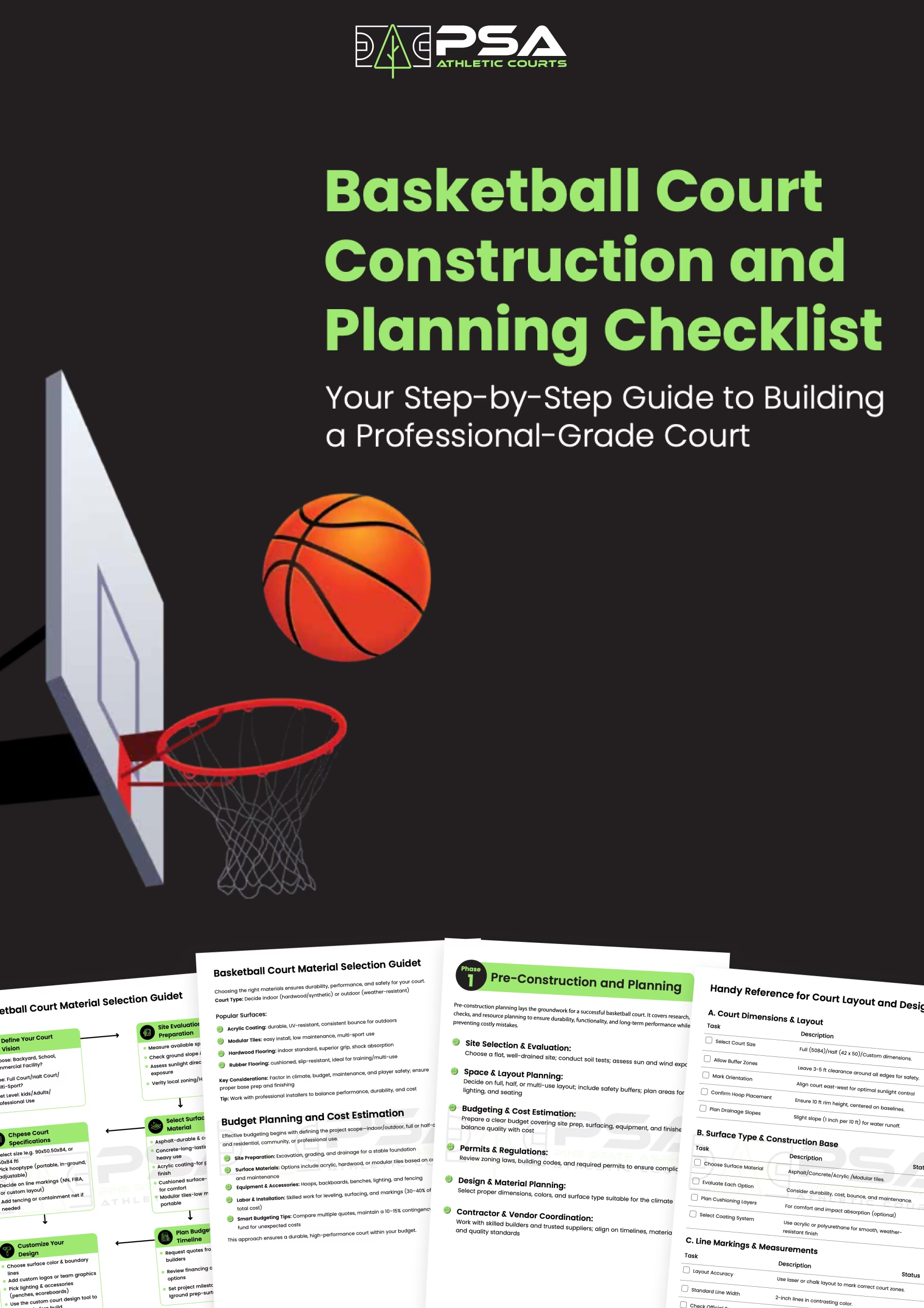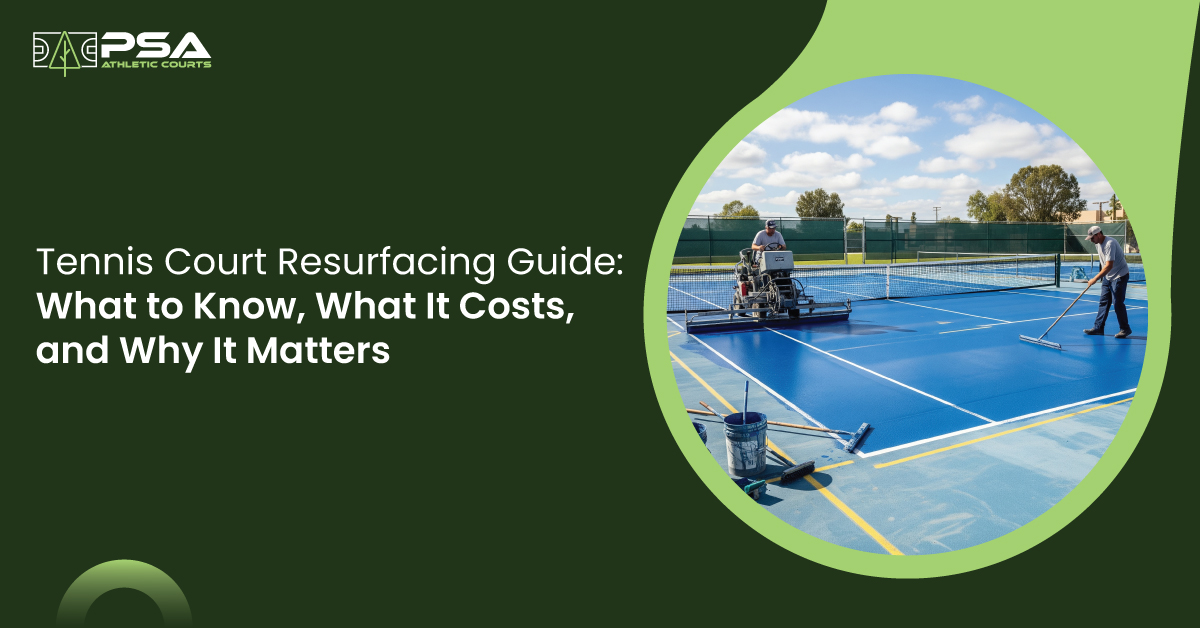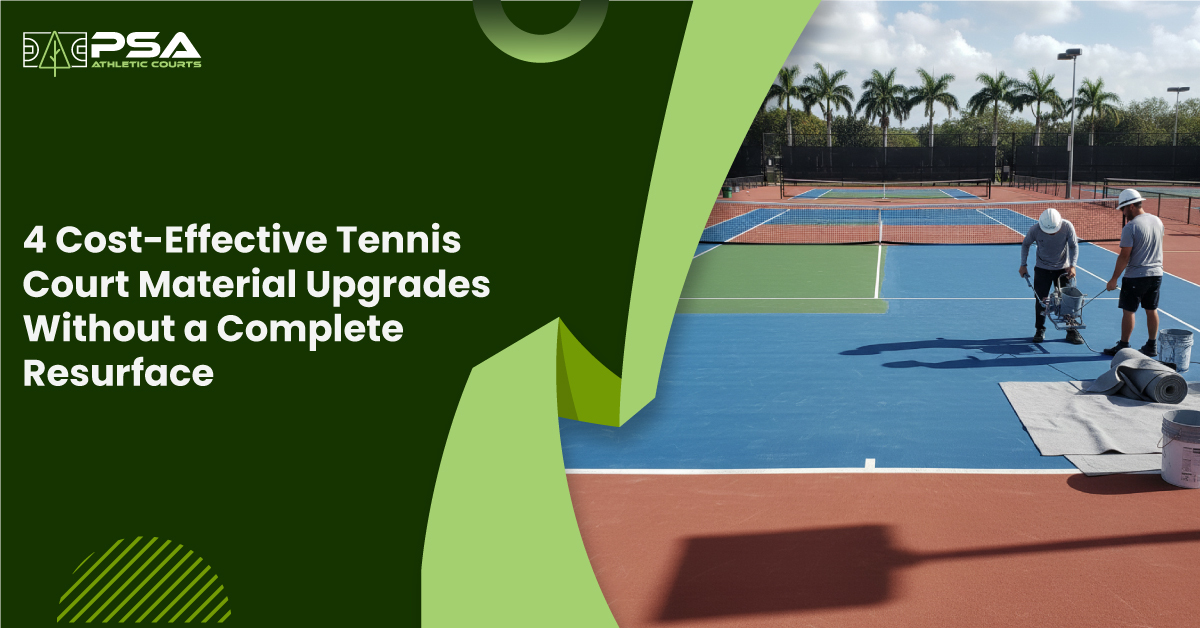Lauded as the “Sport of Kings”, Tennis is more than just hitting the smashes. From the lush-green courts of Wimbledon to the blazing-red courts of the French Open, each tennis court tells a unique story. It is not just the skill and equipment that affect the gameplay but the surface of the tennis court too is a major contributor to a player’s success. However, over the course of its use, a tennis court suffers a lot of damage due to environmental elements like wind, harsh temperatures, and humidity.
Maintaining the tennis court is thus important not just for the sake of aesthetics but to ensure a fair gameplay and safety of the players. One such process of tennis court maintenance is tennis court resurfacing. If you are considering getting your court resurfaced then this guide is for you. It will cover everything from what resurfacing means, to why it matters, and its cost breakdown.
What Goes into Tennis Court Resurfacing?
Tennis court resurfacing is essentially a process aimed at renovating a tennis court to improve its state and enhance the gameplay. Resurfacing the court is quite different from tennis court replacement where the entire court is torn up and then rebuilt. Resurfacing involves removing the damaged top layer of the court surface and replacing it with a new layer.
Before starting the resurfacing process however, a thorough inspection of the tennis court is important to analyse its condition and identify the areas that need work. The different steps that go into the process of tennis court resurfacing include:
- Preparing the surface for layering by clearing off any debris or accumulated organic matter like moss, any existing coatings are also removed in this step.
- Any cracks or other damages to the court are then repaired by using sealants and fillers. It helps to strengthen any weak points of the court.
- A primer is then applied followed by the acrylic resurfacer to evenly coat the court. This ensures an even playing field for the players. An additional cushion layer may also be added for enhancing player comfort.
- After the court has dried and cured, the surface is checked for the quality of repair and court lines are finally marked to complete the tennis court resurfacing process.
Discover the Right Time to Resurface Your Tennis Court
Tennis court resurfacing is a routine process employed to ensure the court stays in its prime condition. As resurfacing disrupts the player’s routine practice or any scheduled matches, it is important to resurface the court at a suitable time. Moreover, the type of the tennis court surface also governs how often it needs repair.
As per the general guidelines to tennis court repair, hard surface courts should be resurfaced every 4 to 8 years while clay courts need frequent resurfacing i.e. every 2 to 3 years. Synthetic grass courts have the maximum life with around 12 to 20 years of good gameplay with proper maintenance, although minor repairs are needed during this time period.
Exploring Popular Tennis Court Surface Types for Resurfacing
A good understanding of the different tennis court surface materials is important before starting the tennis court design process, or setting out to resurface the court. The court surfaces are broadly categorized into three types, including grass courts, clay courts, and hard surface courts i.e. acrylic courts. Each has its own set of pros and cons for the gameplay.

Hard surface courts or Acrylic courts
They are the most commonly used tennis court surfaces with a base made of asphalt or concrete. This hard base is then coated with Acrylic paints, a layer of cushioning can also be added to protect the player’s joints. Hard surface courts are durable with low maintenance and can be used to build multi-sports courts.
Clay Courts
Built with a base layer of brick, shale or crushed stones, the clay courts are then layered with clay on top of the base. They are generally red or green in colour and provide a soft playing field. They require a daily maintenance routine of watering, rolling, and brooming which is not suitable for freezing winters.
Grass courts ( Natural or Synthetic)
Traditional tennis courts were made of natural grass, however they required a lot of maintenance (including watering, mowing, and fertilizing) leading to the popularity of synthetic grass courts. They offer the aesthetics of natural grass courts with rather easy maintenance and a soft playing surface that’s easy on the joints.
Understanding the Cost of Tennis Court Resurfacing
The cost of tennis court resurfacing varies greatly from court to court but the average cost lies somewhere between $4000 to $8000. This cost can go up to $25,000 depending on the extent of damage to the court and any additional edits like premium coating or adding a layer of cushioning. Let’s look at the factors that contribute to the cost of resurfacing:
- Size of the court
The size of the court is a primary factor that decides the cost of its resurfacing with courts spread over a large area costing more. They require more surfacing material and an increased number of laborers as compared to smaller courts.
- Type of the court surface
The type of court surface is another contributor to the resurfacing cost with hard acrylic courts costing less due to their durability. Clay and grass courts require regular maintenance and hence cost more.
- Condition of the court surface
An assessment of the court condition is one of the first steps taken before resurfacing. The extent of damage like size of the cracks, any drainage issues or other including moss or organic matter buildup, etc. contribute to the resurfacing cost.
- Cushioning the court
Acrylic courts require additional cushioning for the safety of the players, this also leads to an increase in the resurfacing cost.
- Customizing the court
Using high-end acrylic coating or customizing the colour of the court also adds up to the resurfacing cost. Adding the windscreens or fencing the court also invites extra charges.
Impact of Resurfacing on Performance and Safety
Any damage to the tennis court does not just ruin the court aesthetics and property value but also deteriorates gameplay and impacts safety of the players. Let’s look at how resurfacing a tennis court impacts a player's performance and safety:
- Improved traction and grip
Resurfacing the tennis court improves the traction and grip of the court, it allows the players to change directions swiftly. This especially improves the gameplay of aggressive players.
- Better ball bounce
Leveling the playing field by repairing any damage and cracks in the court, improves the ball bounce, allowing players to rely solely on their skills and hone them with consistent practice.
- No pressure on joints
An uneven field with cracks puts a lot of strain on the joints of the players, cushioning the field provides a smooth surface for players. It allows comfortable play and protects their joints.
- Reduced risk of falling or injury
Resurfacing the court reduces the risk of falling or injury previously common due to insufficient drainage or any cracks in the field.
- Player comfort and confidence
A good playing field ensures that the game is dependent only on the skills and expertise of the players and not on any other external factors, this improves the confidence of the players.
Closing Thoughts
Resurfacing the tennis court is necessary to maintain the court so it stays in prime condition. With improved aesthetics, enhanced playability and player comfort, it enhances the overall value of your tennis court. Regular cleaning and maintenance however can increase the durability of the court, allowing a longer gap between subsequent resurfacing projects.
Need Help Resurfacing Your Tennis Court?
If you too are considering getting your commercial or private tennis court resurfaced then the expert team at Pine State Courts can assist you decide the best course of action. We offer the finest craftsmanship in designing custom courts, resurfacing existing ones, and building multi-sports courts for the maximum use of your space. Contact us here for any queries and expert consultation!
DOWNLOAD OuR
FREE GUIDE
Ready to build your dream court?
Download our FREE Basketball Court Construction & Planning Checklist and get the step-by-step roadmap to building a professional-grade court—from budget planning to final touches.
No guesswork, just results.











